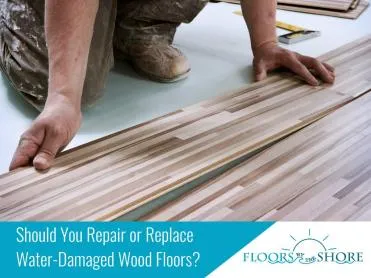
5 Situations When Hardwood Flooring Isn’t the Right Choice
Hardwood flooring has long been a symbol of elegance and timeless beauty in homes around the world. Its rich textures and warm tones can transform any space into a welcoming sanctuary. This means that many homes what to have hardwood flooring and it can be one of the first selections during a renovation.
However, while hardwood flooring boasts many advantages, there are situations where it may not be the ideal choice. In fact, homeowners can regret this expensive transformation down the line because they realise it wasn’t practical for their family. In this article, we’ll explore five scenarios when hardwood flooring isn’t the right fit and suggest alternative options that can better suit your needs.
High Moisture Areas
One of the primary considerations when opting for hardwood flooring is the moisture level in the area. Hardwood floors and moisture don’t always mix well. Here’s why:
Moisture Damage: Hardwood is vulnerable to damage caused by moisture. Excessive moisture can lead to warping, cupping, or even mould growth on your beautiful hardwood floors. This isn’t what you want when you spend a lot of money on new flooring. There’s not a lot you can do once the damage has been done and it starts to warp. Plus, mould growth can be dangerous.
Alternative Flooring Options: In high moisture areas like bathrooms or basements, it’s best to consider alternative flooring materials. Don’t worry; you can still choose one that looks like hardwood flooring, but it’s more practical for your home. For example, consider LVT wood effect flooring. This is known to replicate the look of hardwood without moisture concerns. Indeed, it’s much more durable, which makes it good for anywhere that has moisture. Some designs are waterproof.
Homes with Active Pets
Our furry friends are beloved members of the family, but they can pose unique challenges to hardwood floors:
Scratches and Stains: Pets, especially dogs with long nails, can leave scratches on hardwood surfaces. Additionally, accidents or spills can lead to unsightly stains and odours. Generally, this is not a flooring that’s easy to clean when it comes to pets and the scratches can’t be fixed either. Let’s not forget that hardwood can be slippery for your pets when they’re running around.
Pet-Friendly Alternatives: To keep your floors looking pristine, consider these pet-friendly flooring alternatives. Thankfully, there are a few you can choose from. For instance, consider laminate flooring. It mimics the look of hardwood but is more scratch-resistant. Moreover, it’s easy to clean if there’s been an accident.
Basements and Below-Grade Spaces
Basements are often overlooked as potential living spaces, but they can be transformed into cosy retreats. However, when it comes to flooring, hardwood may not be your best bet:
Moisture and Humidity: Basements tend to have higher humidity levels and are prone to moisture issues. Hardwood can absorb moisture, leading to swelling and warping. Once this sets in, you’ve flooring is ruined.
Know that there are alternative materials you can consider for this type of space. When it comes to basement flooring, consider vinyl flooring. It’s moisture-resistant and available in various styles, including wood-like finishes. So, you can still decorate this space however you want to.
Kitchen and Dining Areas
The kitchen and dining areas are often bustling hubs of the home, and they come with their own set of challenges for hardwood flooring:
Spills and Moisture: In the kitchen, spills are inevitable. Whether it’s a dropped glass of juice or a cooking mishap, hardwood is vulnerable to moisture damage. Moreover, you’re going to be cooking in this space, which means fluctuations in temperature.
Alternative Flooring Options: For these high-traffic and spill-prone areas, consider laminate flooring. It’s a cost-effective option that mimics the look of hardwood. Plus, it’s very easy to clean, which makes it perfect for the kitchen.
Budget Constraints
While the allure of hardwood is undeniable, it’s essential to consider your budget. If you’re someone who’s attempting this project with a low budget, you need to watch what the flooring costs you to begin with. This is particularly true if you’re hiring professionals to install it.
Higher Initial Cost: Hardwood flooring typically comes with a higher initial price tag compared to other flooring options. If you have a large space, this might be something that you want to avoid.
Budget-Friendly Alternatives: If budget constraints are a concern, explore these wallet-friendly options:
Laminate Flooring: Offers a wood-like appearance at a fraction of the cost.
Vinyl Plank Flooring: Budget-friendly and versatile, available in a wide range of styles.
By choosing a flooring material that aligns with your budget, you can still achieve the look you desire without breaking the bank.
Conclusion
We’ve explored five scenarios when hardwood flooring may not be the ideal choice for your home. While hardwood offers undeniable charm and durability, factors like moisture, pets, and budget can lead you to consider alternative flooring options. Remember that the best flooring choice for your home depends on your unique needs and preferences.
Before making your decision, assess your specific circumstances and priorities. Whether it’s moisture-resistant tile for the bathroom, pet-friendly laminate for the living room, or eco-friendly cork for the kitchen, there are plenty of stylish and practical alternatives to hardwood flooring.



